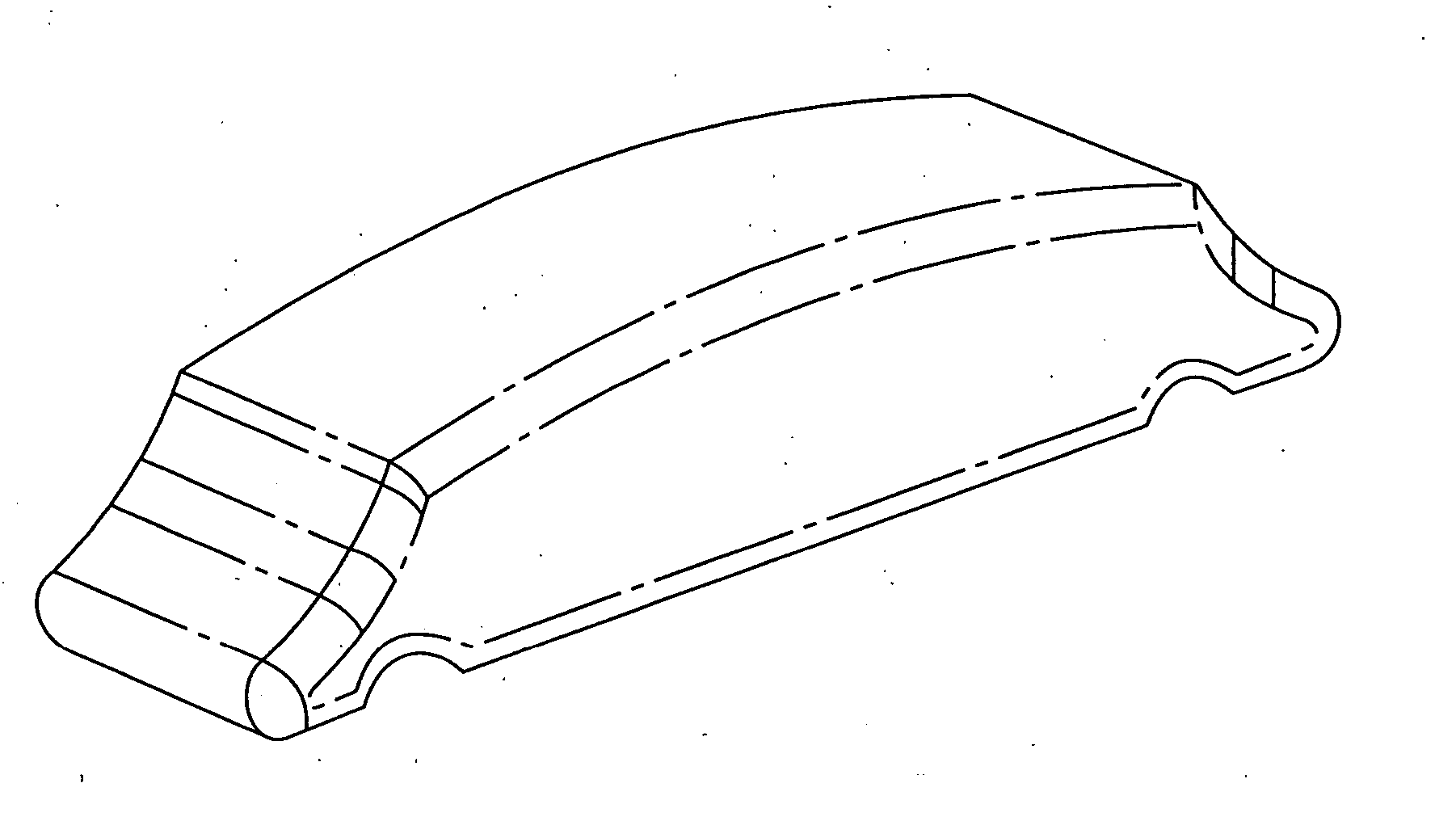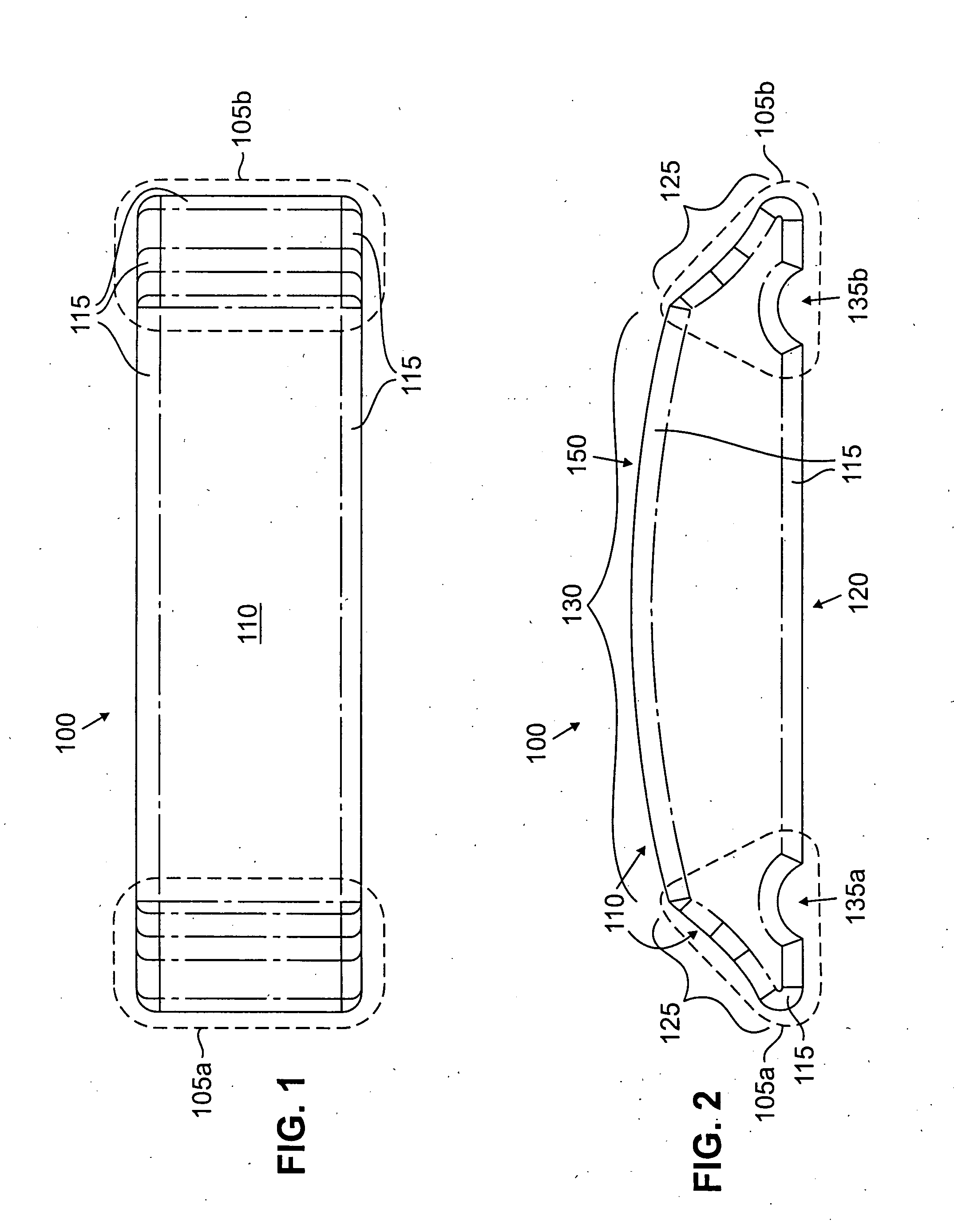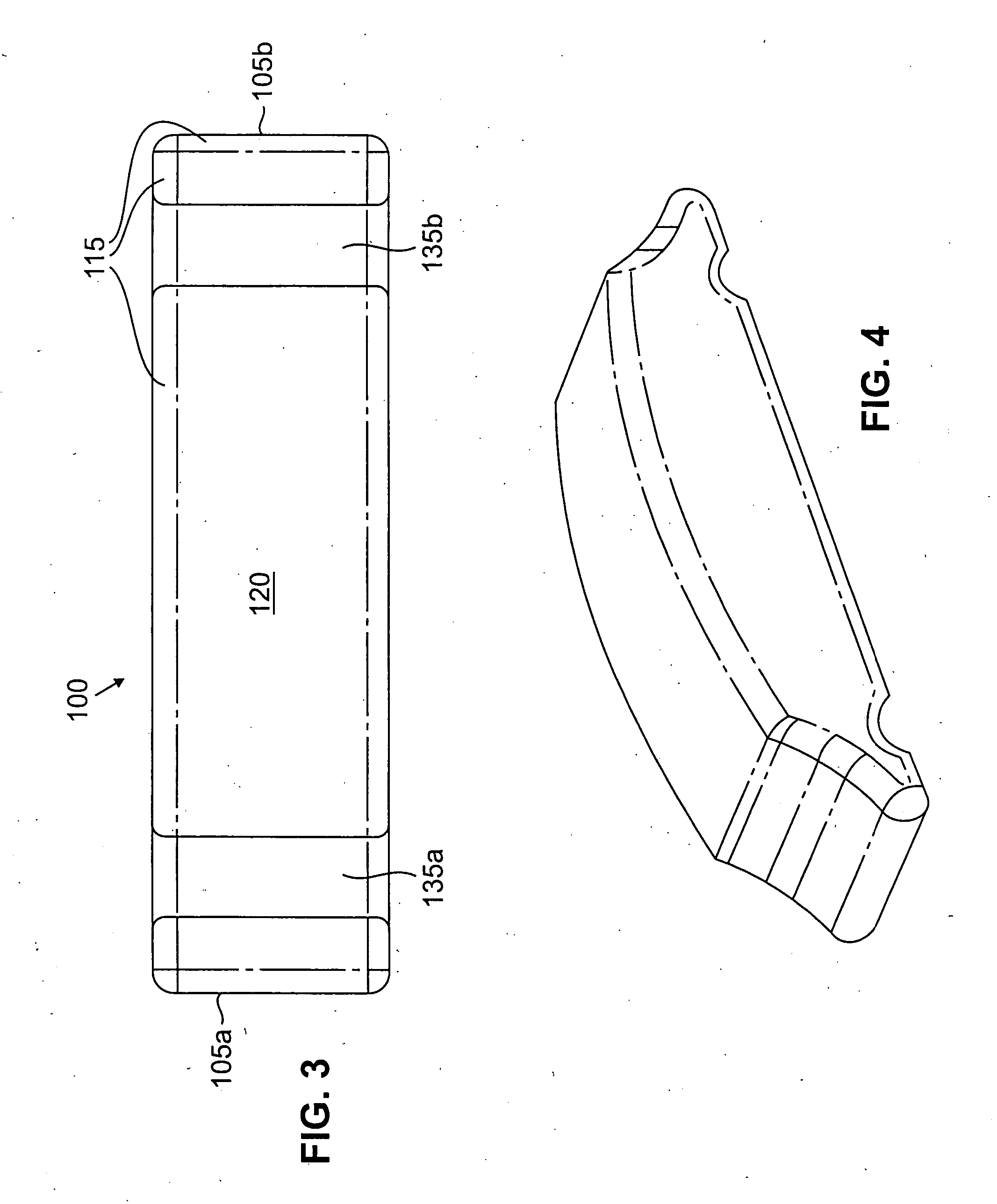Scleral prosthesis for treatment of presbyopia and other eye disorders
a scleral prosthesis and eye disorder technology, applied in the field of scleral prosthesis for treating presbyopia and other eye disorders, can solve the problems of not being able to adapt to the special needs of prosthetic devices used in treating presbyopia, not being able to restore the accommodative power of the presbyopic eye, and not being able to achieve the effect of restoring the effective working distance of the ciliary muscle, improving the scleral prosthesis and reducing th
- Summary
- Abstract
- Description
- Claims
- Application Information
AI Technical Summary
Benefits of technology
Problems solved by technology
Method used
Image
Examples
Embodiment Construction
[0019] The principles of the present invention introduce and teach improvements upon the scleral prosthesis introduced and taught in U.S. patent application Ser. No. 08 / 946,975 entitled “SCLERAL PROSTHESIS FOR TREATMENT OF PRESBYOPIA AND OTHER EYE DISORDERS,” filed Oct. 8, 1997 (the “'975 application”); U.S. patent application Ser. No. 09 / 061,168 entitled “SCLERAL PROSTHESIS FOR TREATMENT OF PRESBYOPIA AND OTHER EYE DISORDERS,” filed on Apr. 16, 1998 (a Continuation-in-Part patent application of the '975 application); U.S. patent application Ser. No. 09 / 472,535 entitled “SCLERAL PROSTHESIS FOR TREATMENT OF PRESBYOPIA AND OTHER EYE DISORDERS,” filed Dec. 27, 1999 (a Continuation patent application of the '975 application); and U.S. Provisional Application No. 60 / 138,105 entitled “IMPROVED SCLERAL PROSTHESIS FOR TREATMENT OF PRESBYOPIA AND OTHER EYE DISORDERS,” filed Jun. 7, 1999 (the specification of the present invention claims priority to this provisional application under 35 U.S.C...
PUM
 Login to View More
Login to View More Abstract
Description
Claims
Application Information
 Login to View More
Login to View More - R&D
- Intellectual Property
- Life Sciences
- Materials
- Tech Scout
- Unparalleled Data Quality
- Higher Quality Content
- 60% Fewer Hallucinations
Browse by: Latest US Patents, China's latest patents, Technical Efficacy Thesaurus, Application Domain, Technology Topic, Popular Technical Reports.
© 2025 PatSnap. All rights reserved.Legal|Privacy policy|Modern Slavery Act Transparency Statement|Sitemap|About US| Contact US: help@patsnap.com



